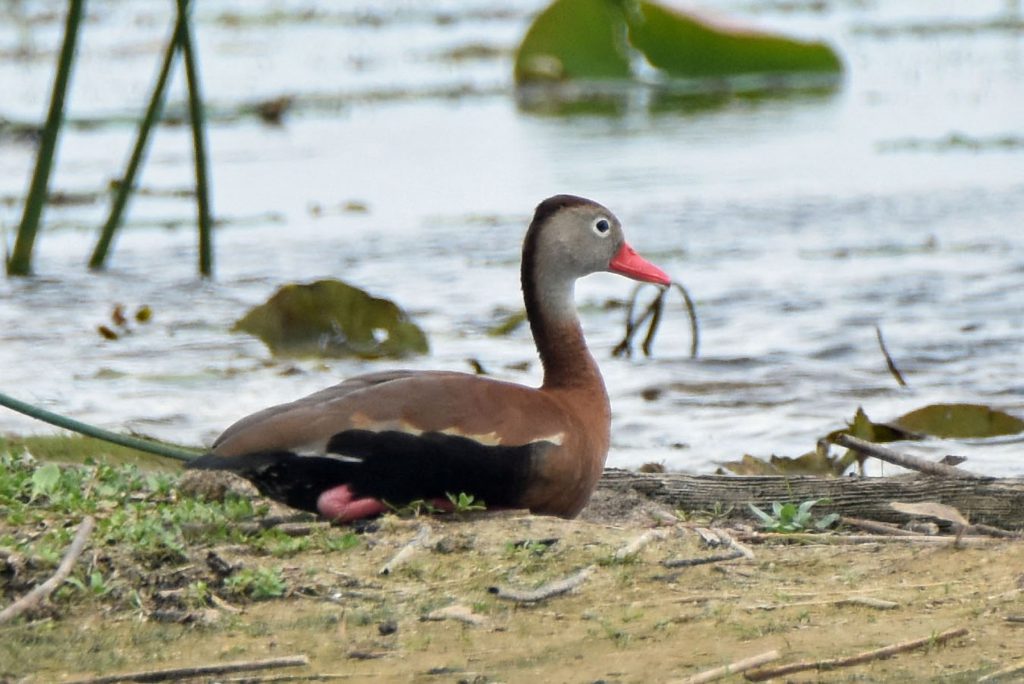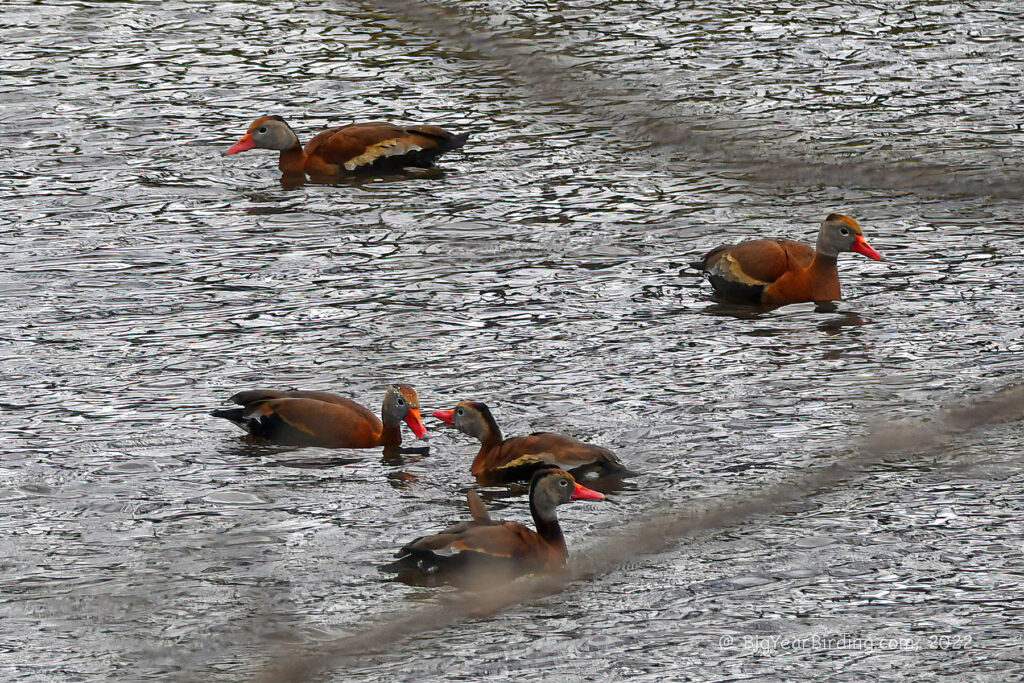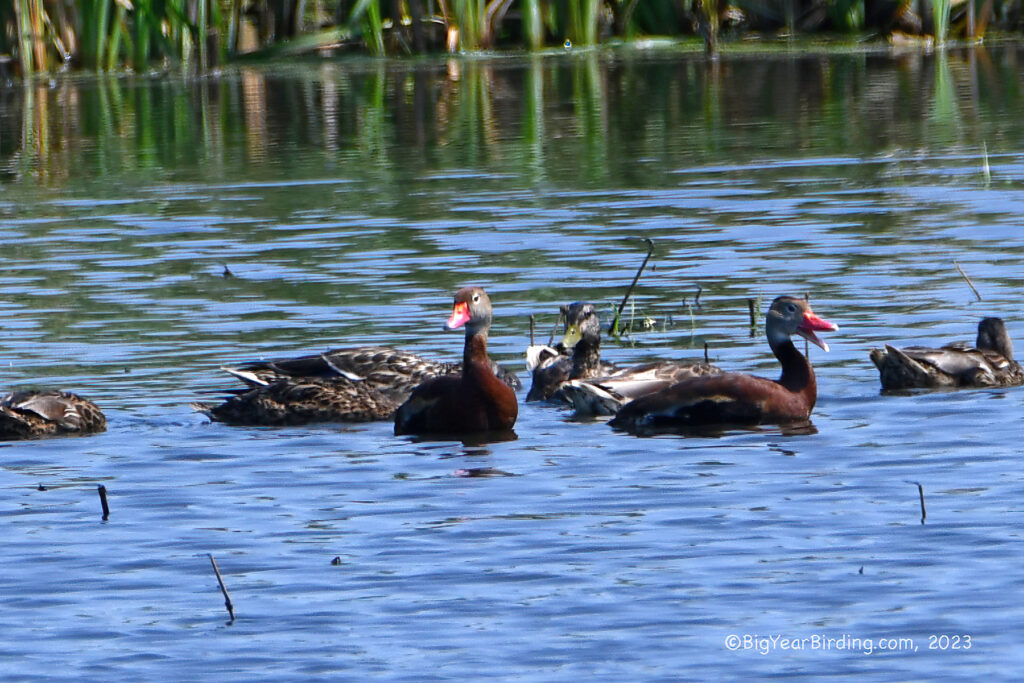
The Black-bellied Whistling Duck is a unique and striking species of waterfowl found in the Americas. This duck is medium to large in size, measuring approximately 18-20 inches in length and weighing between 1.5 to 2 pounds. It is easily recognized by its black belly and chestnut-colored breast, contrasting with its pale gray head and neck. The wings are a dark brown with a distinctive white patch visible in flight, and the bill and legs are a bright pink color.

Black-bellied Whistling Ducks are primarily found in the southern United States, Mexico, and Central and South America. During the breeding season, they inhabit marshes, swamps, and wetlands in the southeastern United States, while during the winter they can be found as far south as Argentina. They are unique in that they are one of the few species of waterfowl that nests in tree cavities rather than on the ground.
These ducks are social and typically gather in large flocks outside of the breeding season. They are also known for their distinctive whistling calls, which are often heard before they are seen. During migration, they will form large flocks that can number in the thousands.
The Black-bellied Whistling Duck is considered a resident species in parts of its range, but other populations are known to be migratory. In the United States, they are typically found from April to September, and during the winter months, they migrate to southern Mexico and Central America. Some populations may also move as far south as South America.

The conservation status of the Black-bellied Whistling Duck is currently listed as of “Least Concern” by the International Union for Conservation of Nature (IUCN). However, the destruction of wetland habitats and the draining of marshes have threatened their populations in some areas. Conservation efforts have been implemented to help protect their habitats, and these ducks are also hunted in some areas for their meat. Overall, the Black-bellied Whistling Duck remains a fascinating and distinctive species of waterfowl in the Americas.

